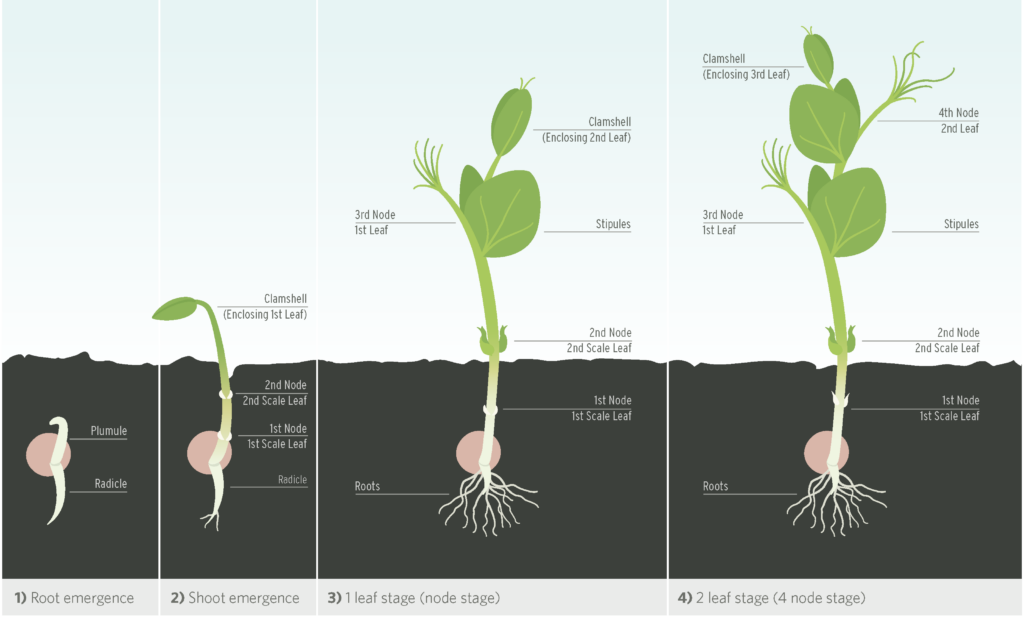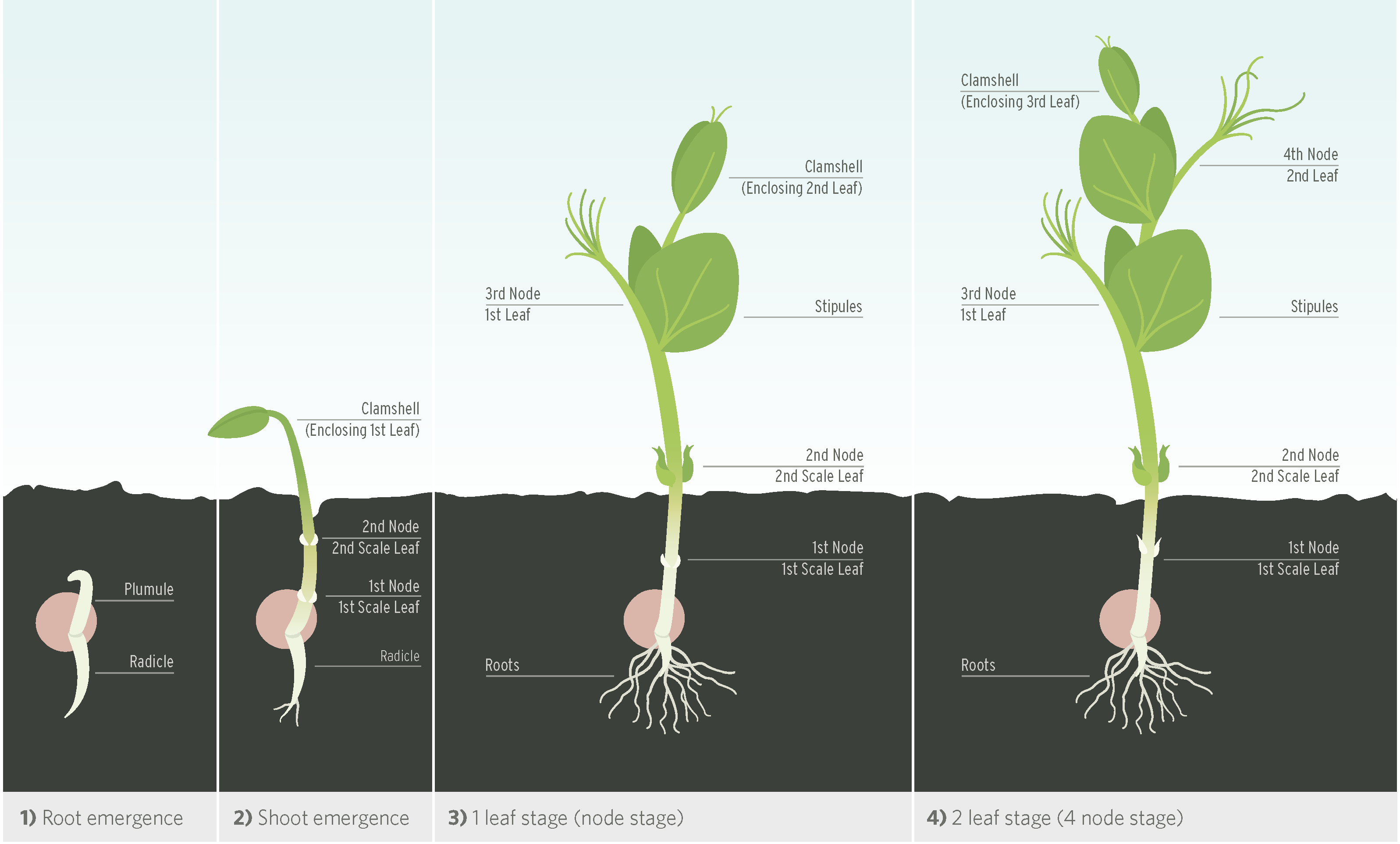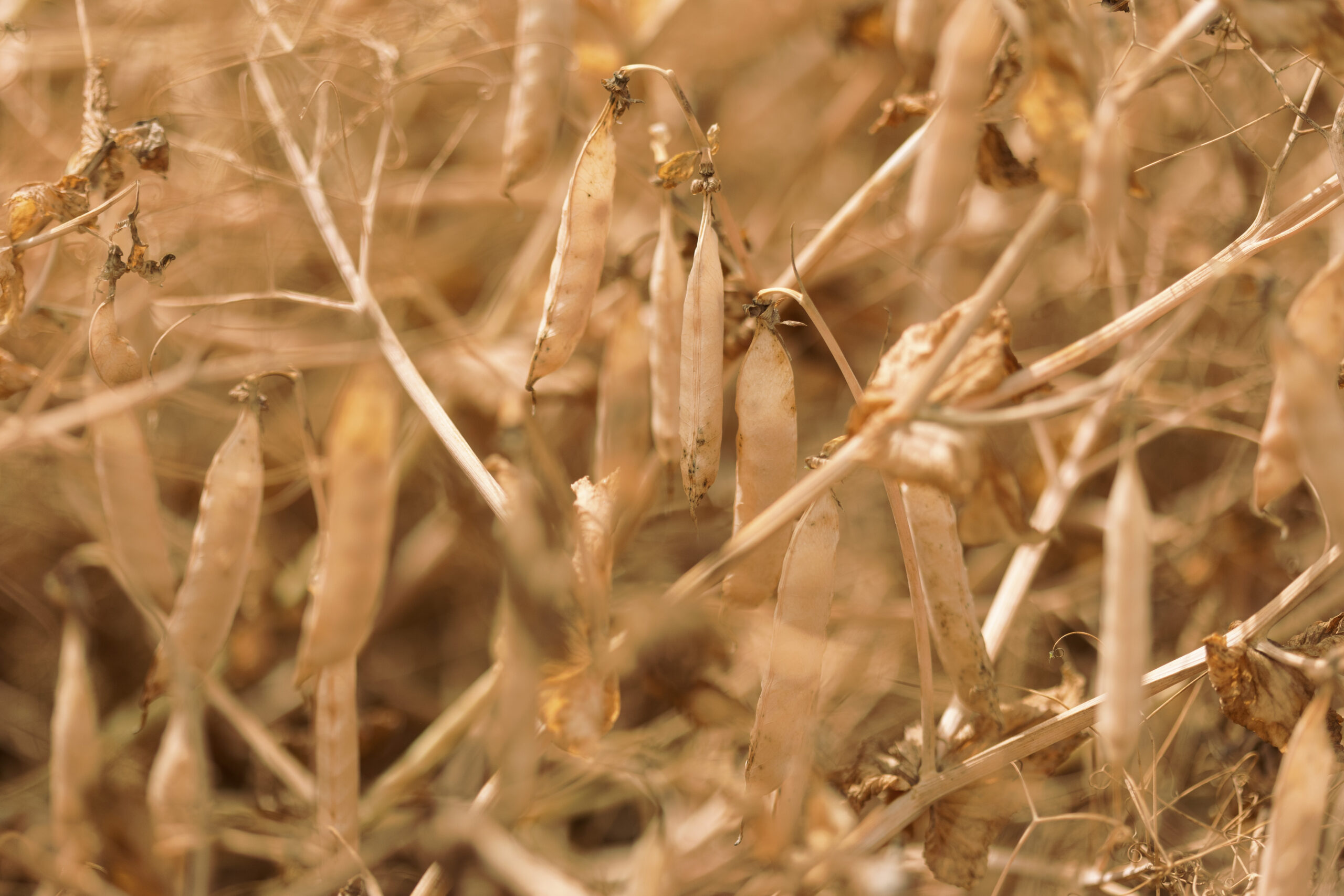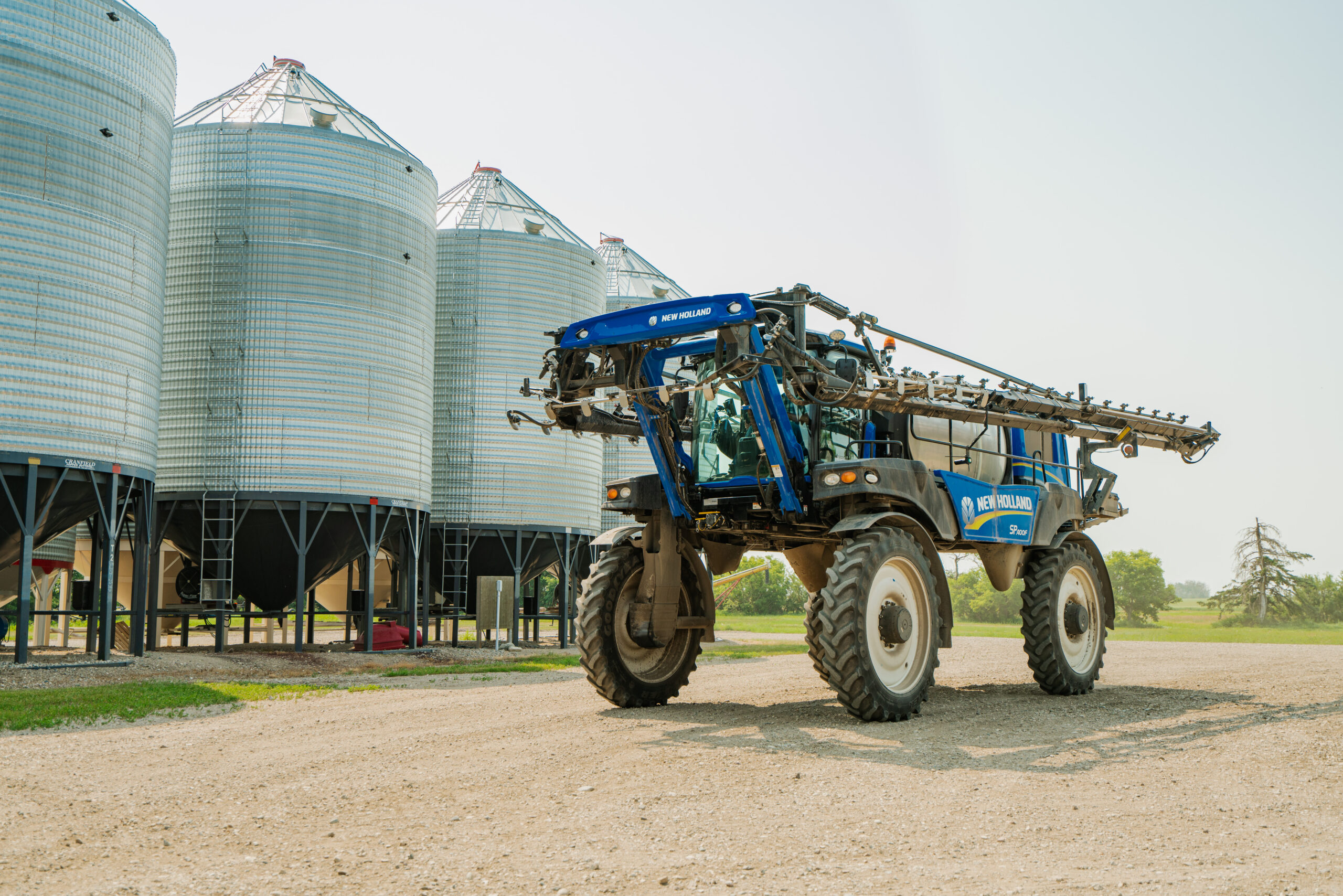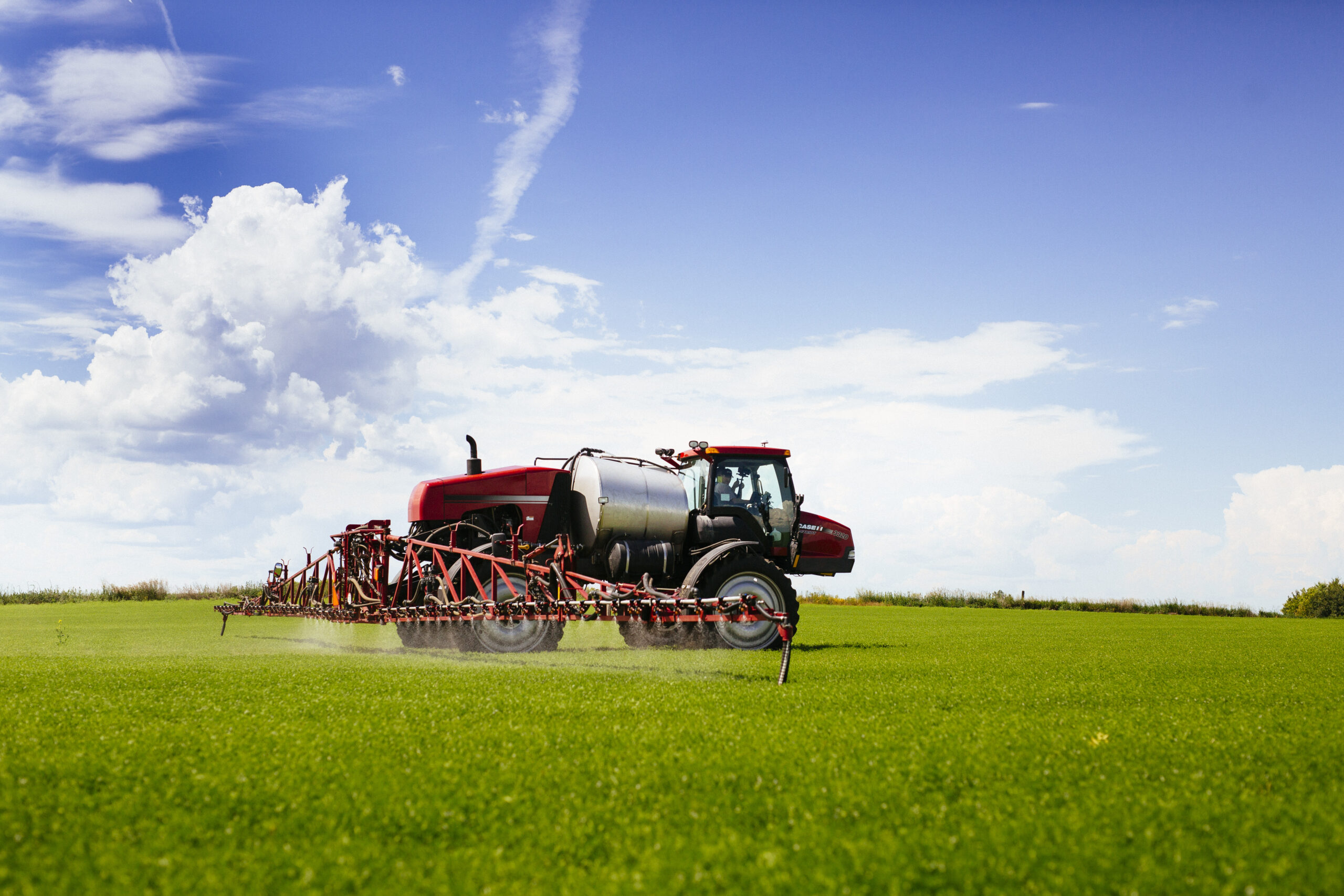Peas germinate with the cotyledon remaining below ground (hypogeal germination). The epicotyl (part of the stem above cotyledons) grows toward soil surface and pushes the main shoot (plumule) above ground. As the shoot grows towards the soil surface and emerges, growing points (nodes) become evident. The first two nodes with peas develop below or at soil surface and the small leaves associated at these nodes are called scale leaves. Regrowth is possible from buds at the base of these scale leaves.
The first true leaf is produced at the third node position in an alternate arrangement (one leaf per node). Each leaf consists of one to three pairs of leaflets and a tendril. With semi- leafless varieties some leaflets are replaced by tendrils. The “leaves” that clasp the stem are actually called stipules and are not true leaves. Growth is rapid during vegetative stages and two nodes can develop in as little as seven days.
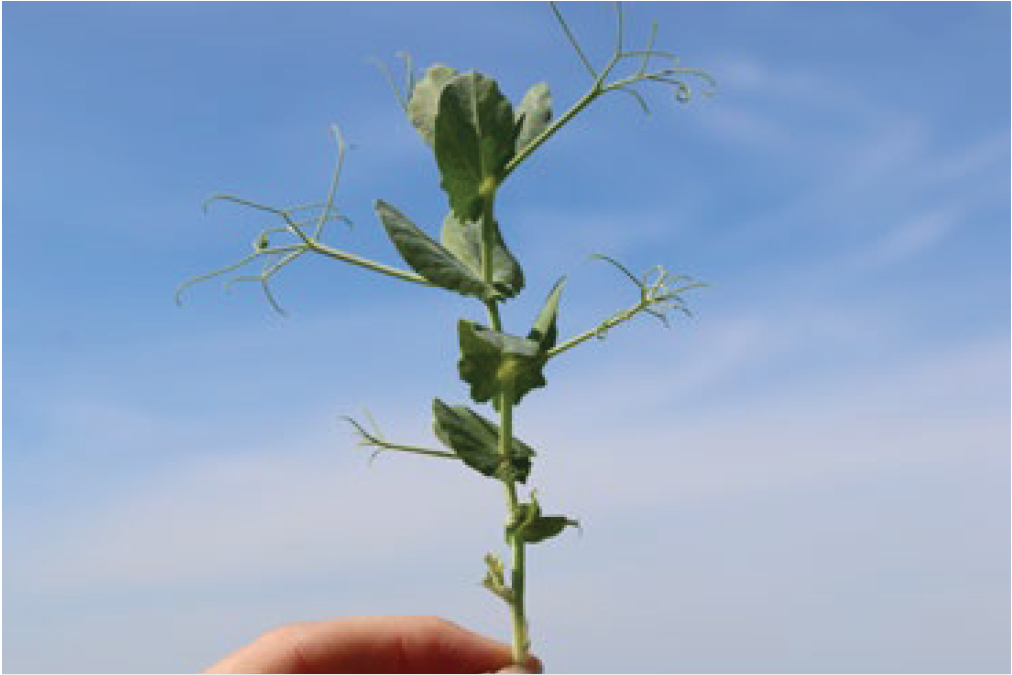
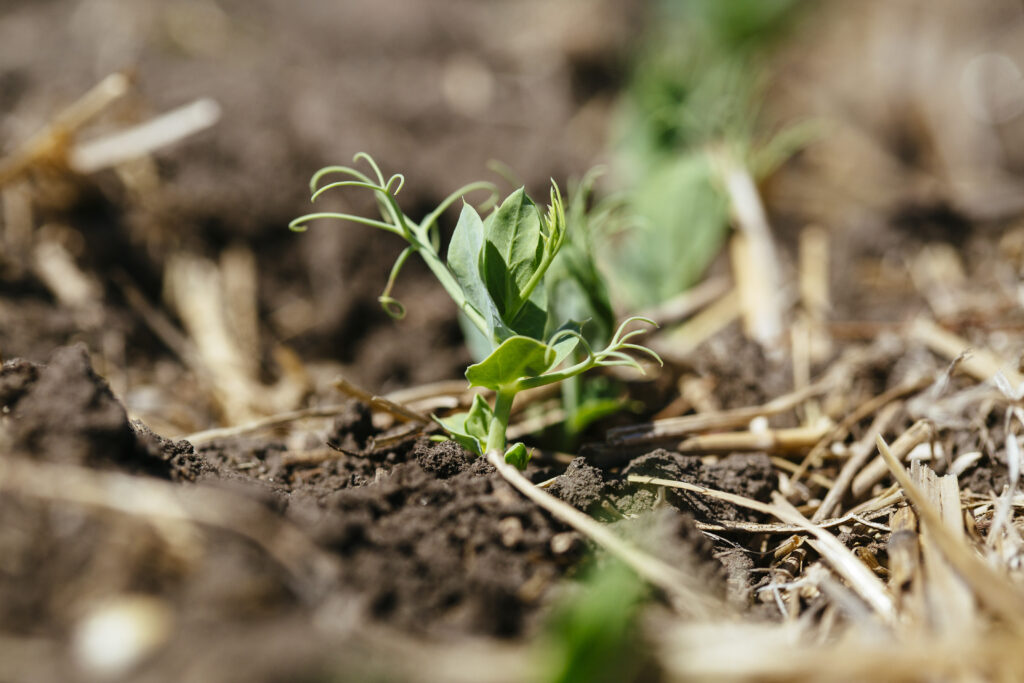
Staging at the Vegetative Stage
When staging at the vegetative stage, some guides refer to true leaf stage, node stage, or above-ground node stage. When considering pesticide applications, make sure you know which stage the products are referring to. In the Pea Growth Stages Diagram, the one leaf stage would also be equivalent to the third above-ground node stage, as one of the lower nodes (scales leaves) is above-ground.
Staging can be difficult and sometimes the true leaves or scale leaves have been removed due to environmental damage, insect pressure, or for some other reason.
When determining crop stage, include nodes where the stipules are fully opened or unfolded. Youngest or newly emerging leaves are not included in staging unless completely open. With peas the clamshell stage is where the stipules are still closed around the new leaf and are not included in the staging. Closely inspect the stem and identify potential growing points or nodes. Not only can regrowth occur from these locations but regrowth can also occur from the seed. In the case of regrowth, expect delays in maturity.
